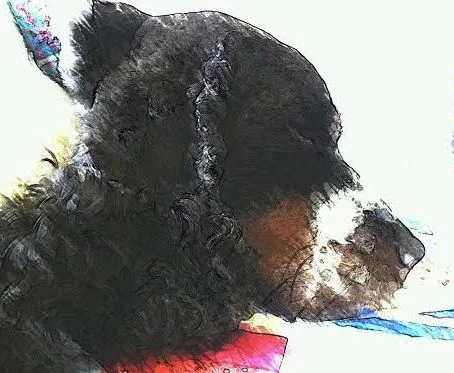 |
| This is a fabric color wheel I created with Cherrywood Hand Dyed fabrics, 2013. |
Isaac Newton created the first color wheel in 1705. He placed the color in wedges in a circle. If the wheel is spun, you only see white, not the individual colors.
When light is totally refracted the eye sees white. If light is totally absorbed, the eye sees black. Yellow is the most refractive of the colors. It is the only color which comes close to white in color refraction. That's why Roy likes the yellow and white basket quilt in the Pilgrim/Roy collection. He said that because the color refraction of white and yellow are so close you see the color in that quilt more than the pieced baskets.
Warm colors project forward while cool colors recede. He said that warm colors relate to the sun, cool colors to water. Purple and green are created by mixing warm and cool colors and are only two "transitional" colors on the color wheel. They interact well with both warm and cool colors.
Roy said that Abstract Expressionism was the first time in art history that color came first. Prior to that the subject of the painting was of primary importance and color was secondary. In traditional space the color is static. Dark and light colors are used to enhance the perspective to make the viewer think the space is 3 dimensional rather what a painting really is--something flat and with just 2 dimensions. In abstract art there is plastic space. Roy said that when there is no intentional image or shape, colors can move forward or backwards in the work.
Colors of equal intensity can create color vibration. Contrast stops color interaction.
Only gradation of colors allow contrasting colors to move. This is a great example of gradation from the "Quilts and Color" exhibit of the Pilgrim/Roy Collection.
 |
| Sunshine and Shadow, Mennonite, Pennsylvania, 1880s |
Roy had a power point with his own paintings and quilts from the Pilgrim/Roy Collection to illustrate his talk. I found his lecture fascinating.
Here are some interesting facts he shared about fabrics, quilts and color in fabrics.
- Wool absorbs light so colors appear more intense. Most of the classic Amish quilts are wool challis which is one of the reasons why their colors appear to be so rich.
- Cotton reflects light.
- Crazy quilts are made of silk. Silk was sold by the pound, not by length of the fabric like cotton and wool. Lead was added to the silk to make it heavier so they could charge more! The lead causes deterioration of the fabric and makes the treated silk poisonous. Yikes! He went on to explain that crazy quilts were made for decoration, to put on a sofa or hung on a wall. They were a way to show off the creator's embroidery skills and not intended for use on a bed.
- The layers of a quilt are stitched together. If ties are used, it's a comforter, not a quilt. The ties are called "toppies" and the loose ends of the toppies can be on the top of the comforter or on the back side. Either is fine.
- Hand quilters quilted inside the block to avoid the seam allowance where there were more layers of fabric to push the needle through.
- Quilt care: Fabric like to be flat and "comfortable". Roy said that is you feel comfortable with the temperature and humidity in a room the quilt will be happy too and will last longer.
